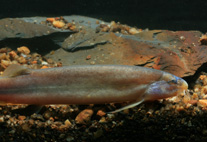Abstract
Monstrilloid copepods were collected during zooplankton surveys in reef and coastal areas of Australia. Representatives of all four genera of the Monstrilloida (Monstrilla Dana, Monstrillopsis Sars, Cymbasoma Thompson, and Maemonstrilla Grygier & Ohtsuka) were recorded. In this contribution a taxonomic analysis of specimens belonging to the latter two genera is provided, and a new genus described. The genus Monstrillopsis was represented exclusively by male specimens, on the basis of which three new species are described: Mon. hastata sp. nov., Mon. boonwurrungorum sp. nov., and Mon. nanus sp. nov. These are distinguished from each other and previously described species of this genus by details of the genital complex (or genital apparatus), body size, ornamentation of the cephalic surface, number of caudal setae, and characteristic modifications of the fifth antennular segment. All have distinctive characters not associated with sexual modifications, which will ease the task of matching females collected in future studies. Australomonstrillopsis gen. nov. is proposed to accommodate a male specimen with a unique combination of characters including massively developed caudal rami, cephalic perioral protuberances, and absence of an inner seta on the first exopodal segment of legs 1–4, among other characters. The new genus is monotypic and contains A. crassicaudata sp. nov. Three of the four new species of Maemonstrilla (Mae. ohtsukai sp. nov., Mae. hoi sp. nov., and Mae. protuberans sp. nov.) belong to the Mae. hyottoko species group, and the remaining one, Mae. crenulata sp. nov., belongs to the Mae. turgida group. Each of the new species of Maemonstrilla from Australia can be distinguished from its known congeners by a unique combination of characters including the type of body reticulation, body size, antennule and body proportions, distinctive characters of the swimming legs, details of the antennular armature, and the presence/absence of a posteroventral process on the genital compound somite. With the addition of the four new species of Monstrillopsis and the four of Maemonstrilla described herein, the number of species in these genera has increased to 13 and 11 species, respectively. In no case did congeneric species co-occur, hinting that there may be a rich species diversity yet to be discovered within the Australian Monstrilloida.

